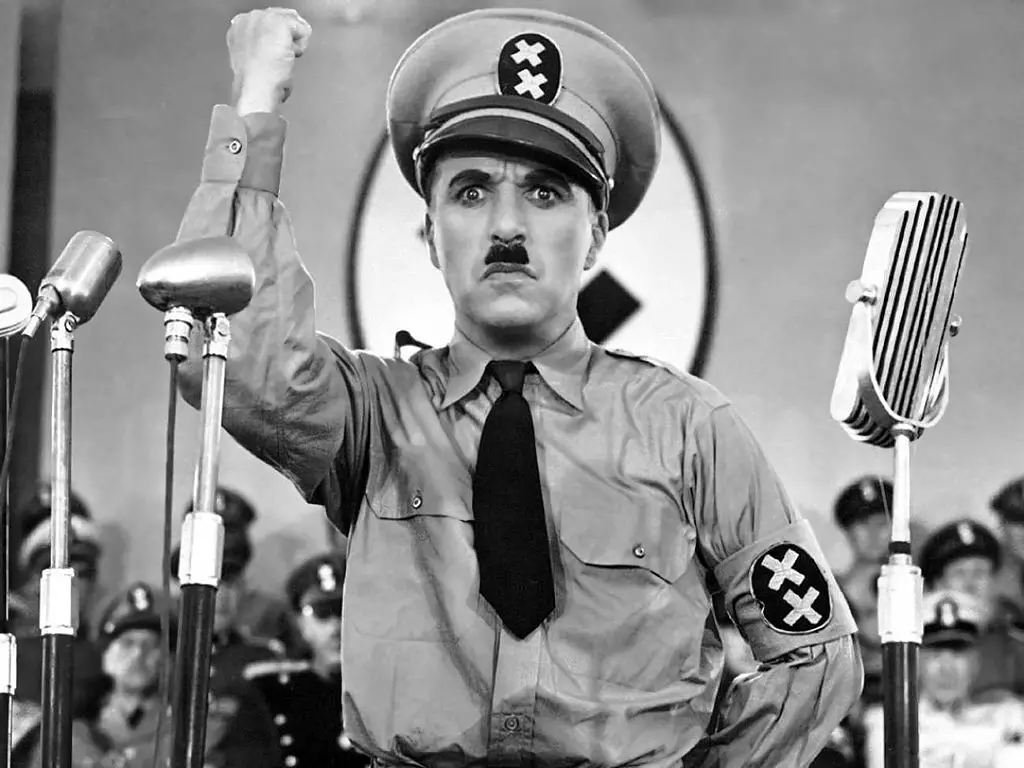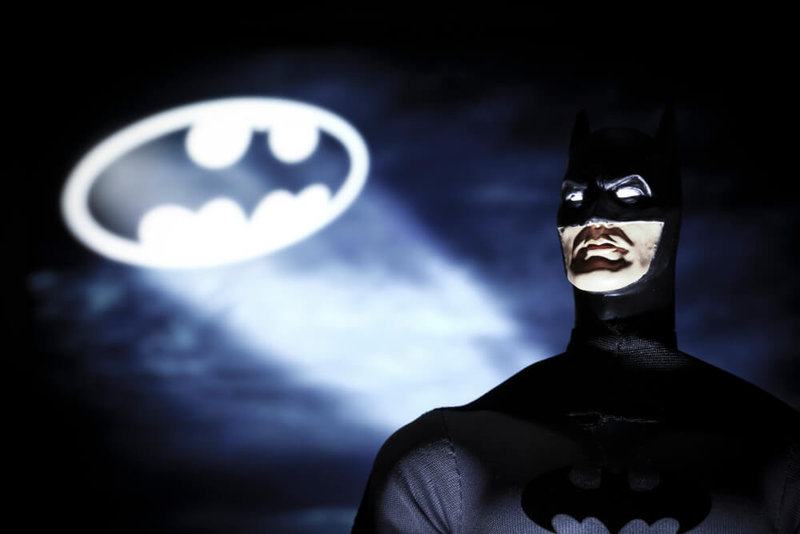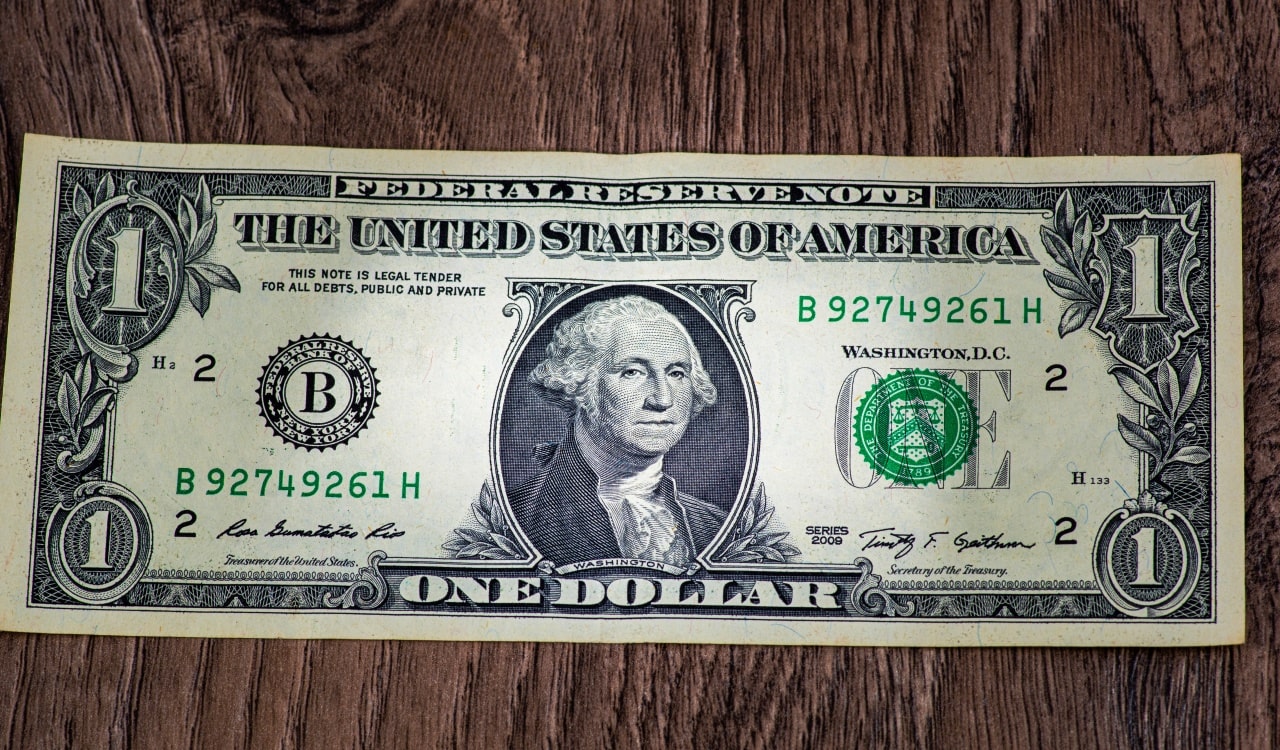Game theories have been used in some form or another for thousands of years. Naturally, these “games” were not always referred to as such a thing. They were often utilized, however, in things like war or in counsel. Even monarchies used to employ them to make decisions for their kingdom. Game theories were originally developed by someone making up a specific situation where two or more people competed. This covers A LOT of things, of course. But the idea here is that one would use mathematical models and form strategies within real-world settings. The games are also driven by the interactions and actions of “rational agents.”
Simply put, a rational agent can be anything or anyone that can make a decision. Therefore, a human could compete against a computer. While game theories used to involve only zero-sum games, they’d eventually branch out into social science through things like behavioral actions. Where one might use their knowledge on how someone might act or guesstimate their decisions. Essentially, these games always use overall logic but that can be employed in many forms The idea is to see specifically how our decision-making (human, animal, or machine) ranks among each other. On top of “why” we made those decisions.

The St. Petersberg Game
- Inventor of Game: Nicolas Bernoulli
This is likely one of the most famous game theories known today. You can potentially form this game around a few different scenarios, but the most popular is the casino setting. Here, you’re part of a game of chance where a fair coin is tossed at each point. The initial stake is that the winner will win a specific amount of money each time this coin lands on heads. Let’s just use $3 for the example. The player will win money every single time the coin lands on heads, doubling each time. But the moment it lands on tails, the game ends. One flip, landing on heads, you win $3. The second time, you win $6. The third time, you win $12, and so on. What you must now consider is: what is a fair price to pay the casino to play this game?
The game is using a fair coin, thus you know the casino isn’t rigging the game. The casino also has unlimited resources. On top of this, your money does indeed double for every period the coin lands on heads. Moreover, you are only having to buy into the game once and once the coin lands on tails, you will leave with all of the money you won. Many game theorists have come up with their own concept, but the best in our view is that you play the game at any price if it is offered to you. While simplistic, the game is not about your specific money but rather the idea of what the game offers. Many try to add a specific amount to this, but this is a game of chance with only two possible outcomes. Thus, specific pricing seems illogical.

Dictator Game
- Inventor of Game: Daniel Kahneman
The Dictator Game is a part of the various versions of ultimatum games. This is a simplistic game where one person takes on the “Dictator” role and provides someone a one-time offer. The person can say yes or no only, without waffling. Whatever their choice is, they must live with it. If the person takes the offer, they technically win something out of the game. If they choose to not accept it, both the dictator and the other player will get nothing. The game is played with the knowledge that there is an endowment of any specific amount. The first player or the “dictator” will determine how the money is split between themselves and the other player. Keep in mind that the dictator can offer any sum they choose. Therefore, the percentage they offer could differ depending on who is playing.
They could offer every bit of the endowment or nothing at all. The recipient or second player has no influence on this decision, but they can always negotiate. They simply cannot make this one-time offer, only the dictator can. Keep in mind that only ONE offer can be made, not several like you might see in a business negotiation. Many believe that based on the limited role the second player has, they will have to accept any offer the dictator makes unless it is nothing. The dictator would want to avoid offering nothing, as a rejection would result in both the second player and dictator getting nothing. Thus, it would benefit them to reject an offer of $0.00. The reason? They’d ensure the dictator took home the exact same amount as them…nothing.

Paper, Rock, Scissors
- Inventor of Game: Xie Zhaozhi
We know, the infamous childhood game of “Paper, Rock, Scissors” is somehow one of the most notable game theories? Yes, as it is a zero-sum game but it also has imperfect information. Whenever one player wins, the other(s) will lose. We know the game works as follows: rock always beats scissors, scissors always beats paper, and paper always beats rock. This means each possible choice can potentially lose to the other. Yet among two people, the ability to pick one of three possible choices gives one a few different ways to go.
To play properly, you can assume the person you’re playing will pick rock, for example. You might have seen them pick “rock” every time you played or maybe you saw the times they employed it specifically. Thus giving you the idea that you can pick “paper” during the points they are most likely to pick the rock option. However, the second player might also know their opponent knows their pattern. They might have also developed a pattern out of the very idea one might be watching them. Thus allowing them to pick “scissors” during the points they’d normally go with “rock.” See how strategic this game is?

Gift Exchange Game
- Inventors of Game: George Akerlof & Janet Yellen
This game was invented to model labor relations between two people: the employee and employer. The employer has all of the true power here, as their choice essentially decides how their employee might act or react. First, the employer has to consider if they want to award their employee with a higher salary. The employee can then decide if they will put in extra effort at their job following this salary increase. As you can see, this is a form of “trust game,” where one or both sides have to trust a person will do as they said they will do. If the employer decides to pay their employee more money and the employee puts in more effort, both win here.
This is the most ideal end result in the Gift Exchange Game. However, many suggest psychologically that the employer would only need to offer higher pay if they add more work for a person to do, or a bigger responsibility. Paying them more for the same job likely will not result in the employee working harder, as their current work led to their increased pay anyway. This is all really about the employee’s payoff. It is thought to be irrational to put in more effort as it would reduce their payoff, the same way it would if they put in more effort “without” an increase in pay. Ultimately, the employer would likely lose if the employee properly played this game.

El Farol Bar
- Inventor of Game: W. Brian Arthur
Imagine a bar that a fixed population of people chooses to go to every Thursday evening to have fun. They will only go if it is not too crowded though. Theoretically, if less than 60% of the population goes to the bar, they’ll all have more fun than if they stayed home. Meanwhile, if more than 60% of the population goes, they’ll all have less fun than they would if they stayed at home. Everyone must decide at the exact same time if they are going to go or not. However, they will have no knowledge of what others choose. However, some versions of this game allow you to discuss your decision with other players but you’re not required to be truthful.
Many might use a pure strategy concept, which is usually symmetric and is guaranteed to fail regardless. Essentially, if everyone decides it will not be too crowded then everyone will then go. This will then paradoxically cause that bar to be too crowded. Meanwhile, if the strategy employed is that the bar WILL be crowded, then no one will go. No matter the decision, there is a loss of fun for all. This is why experts believe a mixed strategy works best. Where people decide their own strategies for this game, giving a better shot to get a result that ends in the best possible outcome.

Diner’s Dilemma
- Inventors of Game: Uri Gneezy, Ernan Haruvy, & Hadas Yafe
Think about this situation for a minute. You and your bros, or maybe your girls (we’re equal opportunity) want to go out to eat. Yet there might be that one person who decides they want to pay for everyone. Maybe they ended up getting a new cushy job or something. However, you and the other friends take exception to this and claim YOU want to pay the bill. Eventually, you all decide to split the bill equally. This is something that would ideally save you money. Keep in mind though, that split bill is on the TOTAL of each meal. A person is not just paying for their own meal here. This is the Diner’s Dilemma game theory.
Most assume that splitting the overall total means they’d actually save money, which is the design of the idea. But what often ends up happening is that the friends sabotage each other by ordering dishes more expensive than they otherwise would have, if they were buying for themselves only. This is the issue when it comes to economics and data only. You can assume a split will be best, but human nature is a factor that is hard to control. Many assume splitting the total bill will save money, so ordering more expensive items seems logical. When in reality, they’ll likely pay more in the end than they would have.

Stag Hunt
- Inventor of Game: Jean-Jacques Rousseau
Infamous philosopher Jean-Jacques Rousseau came up with the Stag Hunt game theory. In his game, he tells us two hunters must decide separately whether to hunt a stag or hare. They also cannot know what the other chooses until they’re out on the hunt. Both players are aware that if you want to properly hunt a stag, it will take the help of their hunting partner. However, one hunter alone could catch a hare. They’ll also do it with less time and effort. However, the hare is worth far less and will give a lot less meat than the stag. Rousseau’s felt that many hunters, acting individually, would go for the hare. While it would bring in less, it is a guarantee.
However, Rousseau feels the best decision would be for both hunters to aspire for the bigger reward of the stag. This means they’d need to trust that the other hunter would decide the same as them. While his concept is sensible, this would likely happen with two friends who tend to go hunting together. They’d likely know their friend would go for the bigger prize so it only makes sense for them to pick that too. Yet those who do not know the other hunter would more than likely pick the hare because they cannot be sure what the other unknown hunter will pick. Thus, they are assured there will be meat even if small versus the potential of nothing.

Chicken
- Inventor of Game: Elmer G. Wiens
We likely all played “chicken” at some point as a youth. This is also referred to as the “Hawk-Dove Game.” The entire goal of this game is for one player to yield and avoid the potential outcome of what might happen if neither decides to do so. Yet the one who yields will be the loser in this game, losing pride and achieving the infamous name of “chicken.” Of course, each player will want to taunt their opponent to ensure their opponent will find shame in yielding. Of course, once one player yields then the game itself is over. The major conflict is then avoided, so even though one player lost, both essentially won. If neither decides to yield, BOTH will lose.
Game theories like this are likely utilized without us realizing we’re using them. For example, if one is on the road and a car is coming your way, you can decide to swerve out of the way or hope they will. If neither of you does this, that is a head-on collision potentially ensuring both of you die. While the “chicken” name is a stand-in for “coward,” there is often too much made out of that. It is not cowardice to protect your own life by swerving at all. It is also not cowardice to try to avoid an international incident, for example. One of the most infamous political games of chicken was the Cuban Missile Crisis, where both Russia and the United States could have started a nuclear war. If no one stopped, we might not be here today.

Edgeworth Paradox
- Inventor of Game: Francis Ysidro Edgeworth
Philosopher and political economist Francis Ysidro Edgeworth published a groundbreaking paper called “The Pure Theory of Monopoly” back in 1897, where he attempted to solve the Bertrand Paradox. In this paradox, two players reach a state of Nash equilibrium where both charge a price equal to the marginal cost. If other firms come in, also working the same, only a small number of positive profits will come if one charges above cost. Edgeworth felt equilibrium could be reached if one charges a stable price. They would be better off in spite of the assumed need to charge more or less.
In some cases, even if the direct price impact will be negative to the business and exceeds conditions, an increase in cost equal to the number of items may actually cause a decrease for ALL optimal prices. If only one business’ total production capacity can be supplied to meet the current social demand, another company can charge a price that exceeds marginal cost. As they’d simply get the remainder of potential customers the other company did not. Otherwise, prices must be somewhat even across the board. Game theories like this are often utilized in businesses. You likely saw it in action during the late 2021/early 2022 American inflation issue.

Battle of the Sexes
- Inventor of Game: R. Duncan Luce & Howard Raiffa
No, we’re not discussing the infamous tennis match won by Billie Jean King. In fact, one could say that this game theory led to the name of the infamous match. In the world of game theories, the Battle of the Sexes is not as controversial. Consider a date between a man and a woman. They have a choice to attend either a boxing event or the ballet. The man would rather see boxing but the woman wants to see the ballet. Both want to go to the same event together, rather than go to different ones. The question is… which one should they attend?
This game theory essentially gives you only three possible choices. While the two people want to attend the same event together, this is not a forced action. Sure, both could either attend the boxing event or ballet. However, the possible third choice is the man going to the boxing event while the woman goes to the ballet. Since this game does not include randomized issues such as their relationship, potential harm, etc. It is down simply to the best payoff. While one would assume the best payoff is attending the same event, due to other factors not being involved, it would be best for the two to go to their own favored events separately.

Signaling Game
- Inventor of Game: David Lewis
The premise of some game theories can be pretty weird and difficult, but not with the Signaling Game. One player is taking the action of signaling to ensure information is known. The other player is the one seeing the signal. Of course, the signaling player could send either true or false information, with false information being more costly. You might be able to connect this to the real world through how businesses react to something. A manufacturer provides a warranty for their product, which is signaling to prospective customers that their product is unlikely to have any problems.
Warranties would be tough to add if there was a high potential the product might be problematic. As the money used to fix several products would be costly to the company. In the game, a signal sender has both a “desirable” and “undesirable” payoff. The receiver knows the probability of each but only has one possible type they can use. Senders move first, while receivers move second. The sender needs to assure the receiver that they are sending a desirable type, and will try to signal to show this. However, the undesirable type could send the same signal. Therefore, the end game here is seeing how the receiver interprets the signals.

Evolutionary Game Theory
- Inventors of Game: John Maynard Smith & George R. Price
Some game theories are mostly about mathematics, whereas the Evolutionary Game Theory gives us a biological connection to go with that. In fact, this specific game theory has a lot of importance in the world of biology. As it helps to define contests, strategies, and analytics that model Darwinian competition. In most game theories, you’re usually focusing more on the classical model that only deals with the strategic payoffs of something. But this game has to focus mostly on the dynamics of strategy change overall. This is key to remember, as this means strategies used in one period might not be applicable in the second period.
This game has been critical in explaining the basis of altruistic behavior, such as how the male interacts with the female. Whether or not the female is larger or smaller could play a factor in this among many other things. Due to the MANY versions of evolutionary game theory, it would be tough to go over all of them. Rather, we’ll give you the basics of each. It always starts with a competitive situation that is only resolved when a change occurs. That might mean one must alter their strategy or risk potentially both or all players meeting their early demise. That is evolutionary because if something did not change or adapt, life could not continue to exist.

Dollar Auction
- Inventor of Game: Martin Shubik
The Dollar Auction is one of the most well-known game theories. To play, there must be one auctioneer who chooses to auction off one single dollar bill. It will always be a one-dollar bill too. The winner will get this bill. Yet the second-highest bidder will lose the amount they bid. In turn, this makes that person the biggest loser in the auction itself. Naturally, the bill could go for any amount. To get some money out of this for the auctioneer, 5 cents is the lowest that can be bid. It is therefore smart to bid this small sum to make a 95-cent profit. Yet others could bid higher at 10 to even 50 cents. One would not want to lose money, but you might want to.
The real goal is to not only win the bid but cause the second-highest bidder to lose everything. For example, if the highest bidder goes to $1.10 for their bid, they did lose 10 cents on this. If the second-highest bidder bid 90 cents, they have now lost the full 90 cents while the winner only lost 10 cents. Therefore, the true game here is not just to win but to screw over the second-highest bidder. Considering you’re pushing them to keep up with you. The auctioneer usually profits in the end, as they get BOTH the winner and second bidder’s money. That could add up to be more than the dollar amount.

Cournot Competition
- Inventor of Game: Antoine Augustin Cournot
This game revolves around the industry structure where companies compete on the amount of output they’ll produce. Just like with other game theories like it, companies must decide on what they do independently and at the same time. For this to work, more than one form of all firms involved must produce a product, without differentiation. None of the companies can cooperate or collude. Each must have market power, so the firm’s output affects the price of the goods. The number of firms must be fixed. Firms will compete in quantities rather than prices, acting strategically as they seek to maximize profits.
However, each of the competitor’s decisions will affect everyone else in some way. Each firm will want to maximize profits in spite of not knowing what decisions will be made by others. Each firm’s output decisions will not have an effect on the decision of its rivals, as they’ll find out afterward. All firms will know the total number of firms in the market and will take the output of others as given. In this game, demand equals the total quantity produced by all firms. Each must then take the quantity set by its competitors, evaluate the residual demand, and then react as if they are part of a monopoly.

Poker
- Inventor of Game: 1800s French Settlers
You might wonder how the game of poker could somehow be one of the most notable game theories. You likely also want to know how this could be one of the most mind-boggling game theories on top of that. However, for those who know the game of Poker, you’re well aware of the strategy one must consider. Poker is not just a fun game to play with the boys. It’s also a game where you must consider several different issues and base your decisions on them. Things to consider will, of course, be things like the hand that you have, the chips you possess, what your opponent(s) have to play, and much more.
David Sklansky famously introduced a fundamental theorem of poker. Where he referenced how poker is a game of decision-making directly in the face of incomplete information. This is why it is a game of risk for those that play. Every time you played your hand the way you would if you could see your opponent’s cards, you gain. Every time your opponents play their cards from the way they would play them if they could see your cards, you gain. However, on top of all of this might be the strategy of bluffing or slow-play, which adds in the element of deception that alters how your opponent(s) play. Beyond this, Poker also might include things like pot odds among many other potential issues a player must face.

Deadlock
- Inventor of Game: William Poundstone
It is likely that if you’re reading this, you know what the term “deadlock” means. However, if you’re unaware of the term, it means that there is a state of inaction or neutralization. That neutral position could be due to several different factors, but almost always has to do with some form of equal power or uncompromising person/faction. Thus, nothing can move beyond a mere standstill. You might know this best from sports when a game ends in a tie. In the world of game theories, the Deadlock game involves an action that is mutually the most beneficial to all players, and must also be dominant.
Due to the fact that all players would win as long as the actions benefit everyone mutually, there is less interest. People want to see some form of conflict between self-interest and mutual benefit. However, what is lost in all of this is that a deadlock game can also heavily impact economic behavior. It can even induce or formulate changes to the equilibrium outcome within a society. The real loss economically here is that a deadlock can reduce potential bargaining power. To break from it, one can use their business power to put a price on the status quo, introduce a process move, and/or add appreciative moves. The latter of which is beloved by buyers.

War of Attrition
- Inventor of Game: John Maynard Smith
War of Attrition in the world of game theories can be somewhat connected to the regular term. In this game, you’ll be given dynamic timing where the players will choose a time to stop and then trade around the strategic gains from outlasting the other players. This will involve the real costs expended with the passage of time overall. This is a lot like the evolutionary game theory but is strategically comparable to the mixed evolutionarily stable strategy. In this game, players can bid any number they’d like in this all-pay, sealed-bid, second-price auction. One’s bid is even permitted to exceed the value of what you’re bidding for.
It might seem crazy to bid over the item’s value, as one would usually not want to exceed the assumed value of any item. That’s just wasting money. Yet you should keep in mind that each player only pays a “low” bid. This is why it would likely be best to bid the maximum possible amount rather than one equal to or less than the value. However, if both players involved bid above the value, then the highest bidder does not win as much as they just “lose less.” Whereas those who bid less than the value will still lose, but they’d lose less than those who might have bid higher than the value who also lost. In the end, there is no beneficial bid in all cases, making this game very difficult as there is literally no dominant strategy to employ.

The Free Rider Problem
- Inventor of Game: Heinz Kohler (originated term)
The term “free rider” is likely one you heard in history class a few times. This game was essentially formulated to find the best strategy to deal with the free-rider problem. Data proves to us that in many situations, all individual members of a group can benefit from the efforts of each member. All can then benefit from collective action. As an example, if everyone pollutes less by driving our cars less, then we ALL benefit from the reduction of harmful gases reducing in the air we breathe. We might even pay for this over other things, and as long as it works out, we’re good. But if something costs more than it is worth, it is no longer a collective good.
For example, you might pollute less but that does not matter enough for anyone, especially you, to notice. Thus, you might not contribute your fair share toward not polluting the atmosphere. However, if it improves in spite of your contribution, YOU are a free-rider here. You’ve seen benefits without putting your fair share or anything into this. Within the world of game theories, the free-rider problem will usually always result in a negative issue where some benefit by doing nothing while others lose in the hope of some benefit. It might seem dumb to pay money out of our pocket while others who put in $0.00 then benefit from it. However, if this is something like a road for example, then everyone needed to have this. Therefore, the benefit is so great that it exceeds the potential loss within the free-rider issue.

Nash Bargaining Game
- Inventor of Game: John Forbes Nash
You’ve likely seen a lot of the “Nash equilibrium” stuff within many game theories or in other economics content. That comes from John Forbes Nash, who also invented the Nash Bargaining Game. You might know it best today as “cooperative bargaining.” Today, Nash’s bargaining solution has become one of the more infamous game theories economists and even social scientists discuss. This is a situation where you see a two-person bargaining problem that satisfies the accepted terms of scale invariance, symmetry, efficiency, and independence of irrelevant alternatives. Within the game, two players will play to model bargaining interactions.
Of course, both players will demand a portion of something. This is usually going to be money, but the goods used can differ. If the total amount requested by the players is less than what is available, both players will get what they want. If the total amount is greater than what is available, neither player gets what they want. You are presented with a non-cooperative demand game with two players that are uncertain about the best possible payoff. You simply do not know what the other player can offer and they do not know what you can provide, so many believe it is best to ask for less to guarantee you get something.

Peace-War Game
- Inventor of Game: Unknown
The Peace-War Game was usually played by academics via computer simulation to study cooperation and aggression strategies. Due to the peacemakers becoming richer over time, it was clear that making war had greater costs than some assumed. Many game theories can open our eyes to things that surprise us like this. The only strategy that acquired wealth rapidly was “Genghis Khan,” who was historically a constant aggressor that made war constantly to gain resources. Using this strategy could benefit players in simulation. However, it was simply not feasible to do this as you risk a lot more than you gain unless you can guarantee victory.
That led to the “provokable nice guy” strategy, which is a peacemaker until they are attacked. Players will continue to gain wealth doing this by cooperating with each other, which then eats away at the potential profits of constant aggressors. The best deterministic strategies were usually reciprocal altruism, tit for tat, and the provokable nice guy. Therefore, the best strategy to take, at least initially, is to make peace. After this, you can switch it up, where you might do “tit for tat with forgiveness.” As in, you make war then on the next move make peace anyway. That allows players to escape from wasting resources on retribution cycles.

Traveler’s Dilemma
- Inventor of Game: Kaushik Basu
In the Traveler’s Dilemma, an airline loses two suitcases that belong to two different travelers. Both are identical suitcases and contain identical antiques. The airline manager is now tasked with settling the claims of both travelers. He must tell them that the airline is only liable for a maximum amount of $100 per suitcase. However, he’s unable to find the exact price of these antiques. Therefore, to determine a proper appraised value of the antiques, the manager decides to separate each traveler to speak with them alone. He asks them to write down the amount of the antique value. He also gives a rule that it must not be less than $2 and no larger than $100.
The manager claims if each traveler writes down the same number, then he will see this as the “true” value of the antiques and reimburse both travelers with that exact amount. Yet if either writes down a smaller number than the other, the smaller number will be seen as the true value. Both will be given that number along with $2 extra being paid to the one who wrote the lower value while $2 would be deducted from the person who wrote down the higher amount. The question is: what strategy should the travelers employ? Most would say to write down the maximum amount, as this would generate the highest profit for both and they’ll be given the same number without either seeing a deduction.

Keynesian Beauty Contest
- Inventor of Game: John Maynard Keynes
The Keynesian Beauty Contest is one of the most well-liked game theories around. Invented by John Maynard Keynes, he decided to come up with a game theory that could properly explain price fluctuation in equity markets. In his 1936 book, The General Theory of Employment, Interest, and Money he describes a simple beauty contest. In this contest, people are rewarded for selecting the most popular faces among all players. This is being done over the more common concept of which they might personally believe to be the most attractive. Essentially, they are picking the person they feel the others will pick.
These rational agents (the people) are given 100 photographs and are tasked with picking the six most attractive faces. Those who pick the most popular faces get a reward. The more common choice would be to pick the people that are attractive to them, but a sophisticated contestant might wish to maximize their chances of winning. Therefore, they would need to know what the majority perception of attractiveness is, then make their selection based on that. The hiccup in this is that one must consider the differences in attractiveness we all have that differ from the norm. This game theory has been utilized in many forms, especially in the stock market.

The Kobayashi Maru
- Inventor of Game: Spock (Gene Roddenberry)
This is Science Sensei, if you thought we were going to avoid using the Kobayashi Maru from Star Trek, you were sadly mistaken. This game was utilized in the Starfleet Academy, introduced by Spock. Of course, Spock comes from the Vulcan race of people who use logic to determine their actions across all aspects of decision-making on their planet. In this game, your character is being tested the entire time. The actual game will always result in a no-win scenario, but the players or cadets are unaware of this going into the simulation. The goal of the exercise is claimed to be to rescue the civilian ship known as the Kobayashi Maru.
It is damaged and stranded in dangerous territory. The cadet being evaluated, usually the Captain in the simulation, must decide whether to attempt to rescue the ship or not. They could do so, endangering their own ship and crew, or leave it behind to see certain destruction. Those attempting to rescue the ship will be hit by an enemy force that will end them. There is no way to win unless you do as James T. Kirk did. He was the only cadet to defeat the test…because he cheated. Kirk knew he could not win, so to avoid certain demise, he changed the conditions of the test itself.

Volunteer’s Dilemma
- Inventor of Game: John Forbes Nash
The Volunteer’s Dilemma is one we’ve likely all been faced with, even if we do not realize it. Thus, it is one of the most relatable and timeless game theories. This game gives you a situation where each player can make a small sacrifice that benefits everyone or wait in the hopes of benefitting from someone else’s sacrifice. Yet “sacrifice” should not be seen as one choosing to end their life each time. It might just be an inconvenience issue for them. One example of this might be that the power goes out for an entire block. Surely, there must be a problem for everyone considering it is not just YOUR power that is off.
Therefore, one person can call the electric company so they will come by and fix the issue for everyone. However, there was still a cost one has to give up when they call. It might only be their time, some sort of effort, etc. Yet there is still something given up that others did not have to sacrifice. Thus, if one person volunteers then everyone else benefits. This has often been cited as an issue for the public good. Unless the volunteer is guaranteed some benefit, they might feel they will benefit most by free-riding. There is also an issue of the bystander effect, where people see but do not report an incident because it doesn’t benefit them.

Prisoner’s Dilemma
- Inventors of Game: Merill Flood, Melvin Dresher, & Albert W. Tucker
A lot of the game theories we referenced previously often act against or differently from the Prisoner’s Dilemma. While the game theory has been heavily expanded upon over the years, the initial game follows two completely rational individuals that may or may not cooperate with each other. Even if it is in their best interest, they might still be at odds. Within this dilemma, two members of a criminal enterprise are arrested and put in prison. Each prisoner is somehow in solitary confinement, which would prevent them from talking to one another. The prosecutors of this case lack enough evidence to convict both on a principle charge. However, they have more than enough to convict both on a lesser charge. To hopefully get more out of this, the prosecutors offer both prisoners a bargain.
Each prisoner could betray the other by testifying that the other prisoner committed the crime. Yet they could also decide against this by remaining silent. If both betray the other, each serves a two-year sentence. If one betrays the other, the betrayer will be set free while the betrayed gets a three-year sentence. Meanwhile, if both remain silent then they will each only serve one year on the lesser charge. Which decision is best? Many believe remaining silent works best because both of you lose if both of you talk. You cannot know what the other will do, so it seems like talking makes the most sense. However, remaining silent offers a better outcome, as you could not know what the other will do. If you both talk, you get a larger sentence than if you both remain silent.
Sources:
Stanford University
University of Wisconsin-Madison
Massachusetts Institute of Technology
University of California – Irvine
Columbia University
Cornell University
University of Virginia
University of Michigan
Barcelona School of Economics
Journal of Interdisciplinary Economics
National Library of Medicine
Star Trek
World Rock Paper Scissors Association

